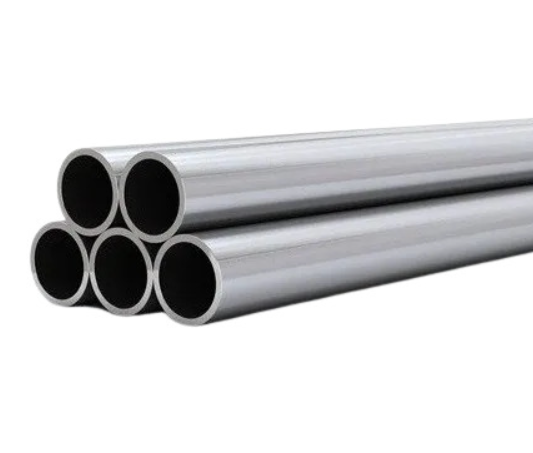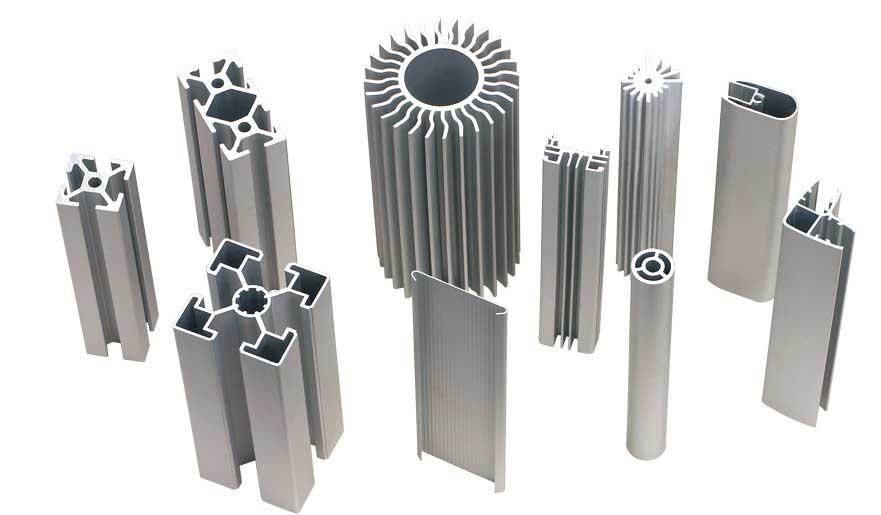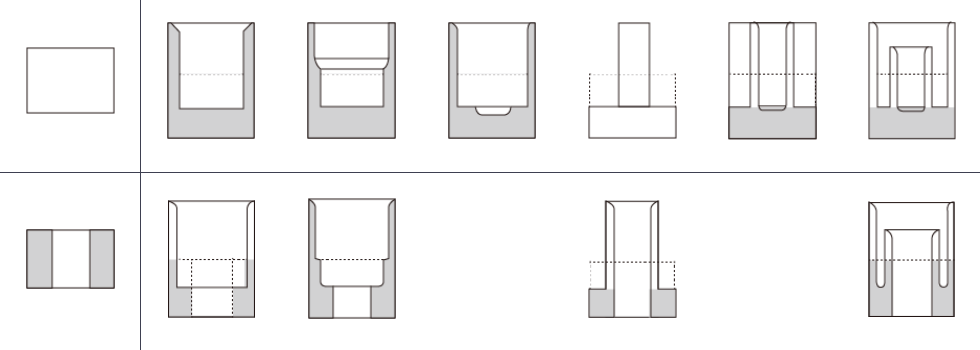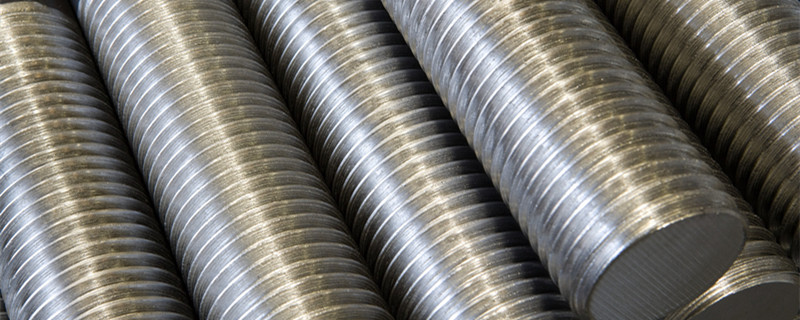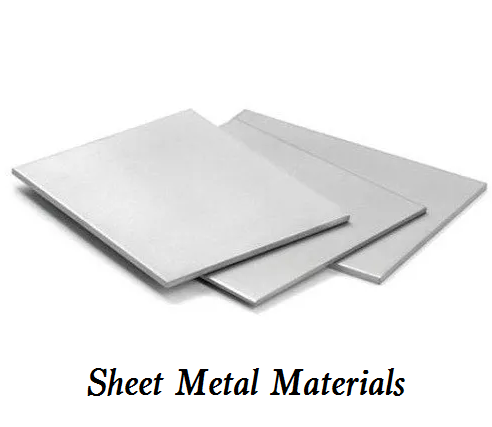SPCC (Steel Plate Cold Commercial) and SPHC (Steel Plate Hot Commercial) materials are both classifications of commercial quality steel used for forming operations involving bending and moderate drawing, often used in the manufacturing of parts and structural components. In this blog, we will explain the properties (chemical composition and specification) and equivalent grade of SPCC and SPHC steel materials and also break down the differences between them.
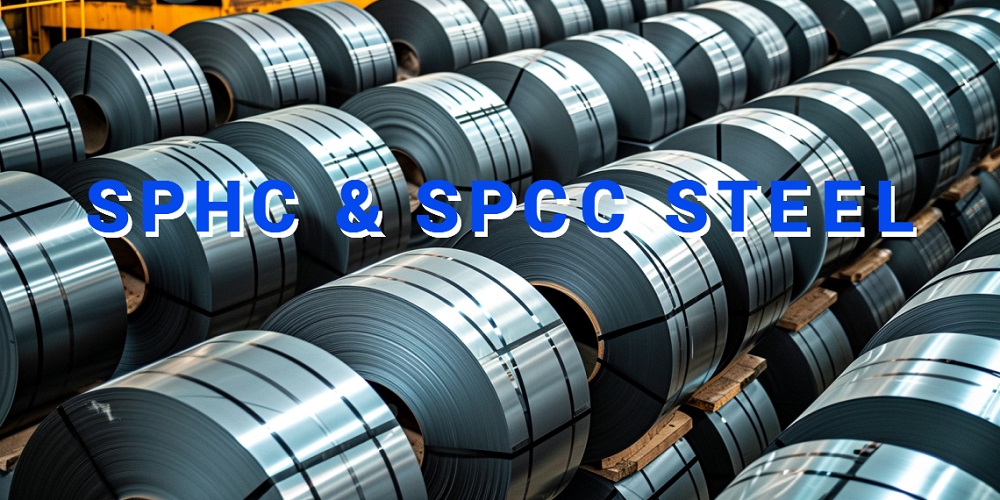
What is SPHC Steel Material?
SPHC stands for “Hot-Rolled Mild Steel Plate/Sheet,” which is carbon steel rolled at temperatures higher than the recrystallization temperature (900°C to 1,200°C for iron-based materials). It is also called HOT or black skin due to the black oxide film known as scale that is produced during the process. SPHC is manufactured by heating slabs made from raw materials such as limestone, iron ore, and coke and then rolling them through a rolling mill. Normally, to facilitate transportation, it is coiled up.
SPHC Chemical Composition
The chemical composition of SPHC steel generally includes:
- Carbon (C): Up to 0.15%
- Manganese (Mn): Up to 0.60%
- Phosphorous (P): Up to 0.050%
- Sulfur (S): Up to 0.050%
SPHC Equivalent Grade
SPHC steel, as defined by the JIS G3131 standard, is a hot-rolled mild steel plate/sheet with good ductility and is used in applications where precision for the material chemical composition is not too stringent. Equivalent grades to SPHC in other countries’ standards may not be exact matches but can be considered functional equivalents with similar properties and applications. Below are some of the common SPHC equivalents:
- ASTM A1011 / ASTM A1018: In the United States, the equivalent to SPHC would be the hot-rolled steels under these ASTM standards, particularly the grade CS (Commercial Steel) Type B, which is similar in composition and application.
- EN 10025: In the European standard, the equivalent for SPHC could be the S235 grade, although not a direct equivalent, it is often used in similar applications.
- ISO 3573: The ISO standard equivalent for JIS SPHC is HR1, which stands for hot-rolled carbon steel sheets and strips for general fabrication purposes.
- DIN 1614-2: In Germany, the equivalent would be StW22, according to the DIN standard for hot-rolled steels suitable for cold rolling.
SPHC Material Properties
SPHC is a type of carbon steel known for its workability and availability, following is the main properties of SPHC materials:
- High Workability
SPHC has a low carbon content, making it a soft metal known for its particular suitability for bending processes. Normally it comes with a black oxide film, which can be removed by surface treatment to improve paintability and drawability. However, dimensional accuracy is not very high due to changes in material temperature. - Readily Available and Inexpensive
SPHC has high production efficiency since it is rolled at high temperatures, and the process involves fewer steps compared to materials like SPCC, making it relatively inexpensive to acquire, especially for non-special thicknesses. There is also a large volume in circulation, with SPHC plate thicknesses ranging from 1.2 to 14.0 mm. - Low Strength
SPHC has a low carbon content and hence, low strength. While other carbon steels have specifications for tensile strength, SPHC only has a minimum requirement of “270MPa or higher,” making it unsuitable for applications requiring high strength. - CNC Cutting and Machining Points For SPHC Steel
As SPHC is distributed as sheet metal, it is often cut, bent, and welded, and there are limited scenarios for machining. However, in some cases such as drilling or tapping, machining may be necessary. Since SPHC has a low carbon content, its hardness is not very high and the material is soft. It is important to consider the general machining points for carbon steel.
What is SPCC Steel Material?
SPCC refers to cold rolled steel sheet and is produced by cold rolling SPHC (Steel Plate Hot Commercial). Among carbon steels, it has a carbon content of less than 0.1% and is classified as an SPC material. SPCC is a steel material used for sheet metal and press work, and is not distributed in forms other than sheet. The sheet thickness is mostly between 0.5 to 3.2mm, with 1.6mm and 2.0mm thicknesses being the most stable in circulation.
SPCC Chemical Composition
The typical chemical composition of SPCC steel generally includes:
- Carbon (C): Up to 0.15%
- Manganese (Mn): Up to 0.60%
- Phosphorous (P): Up to 0.100%
- Sulfur (S): Up to 0.035%
SPCC Equivalent Grade
SPCC steel is a commercial quality cold rolled steel specified by the Japanese standard JIS G3141. It is known for its good formability, weldability, and a slightly higher strength than typical commercial quality cold rolled steels. SPCC is often used for applications where its fine surface quality and thickness precision are important. Equivalent grades to SPCC from other country standards are not exact but can be considered functional equivalents with similar properties. Here are some potential SPCC equivalents:
- ASTM A1008 / A1008M: This is the standard specification for cold-rolled structural steel in the United States. Within this specification, the grade CS Type B (Commercial Steel) is similar to SPCC in terms of chemical and mechanical properties.
- EN 10130: In the European standard, the grade DC01 (FeP01) is the closest equivalent to SPCC.
- ISO 3574: The ISO standard equivalent for JIS SPCC is CR1.
- DIN EN 10139: In Germany, the equivalent would be DC01 (St12) according to this standard for cold-rolled narrow steel strip for cold forming.
SPCC Material Properties
SPCC is characterized by its high workability and formability among carbon steels. Following are the main features of the SPCC steel:
- High Workability and Formability
SPCC is known as a material with high workability and formability due to its low carbon content and softness. It is particularly suitable for bending and drawing processes. Also, SPCC is well-suited for welding. - Smooth Surface
SPCC has a smooth surface, which makes it highly decorative, and it can achieve an even more beautiful appearance with painting or plating. - Prone to Oxidation and Rusting
SPCC has its surface oxide film removed. Therefore, it is prone to oxidation and usually has oil applied at the time of shipment to suppress oxidation. To prevent oxidation, post-processing such as painting or rust prevention treatment, and plating is indispensable after processing. - CNC Cutting and Machining Points for SPCC
As SPCC is distributed in sheet form, it is often cut, bent, and welded, and there are limited scenarios for machining. However, in some cases such as drilling or tapping, machining may be necessary. Since SPCC has a low carbon content among carbon steels and is soft, it can be said to be a material that is relatively easy to machine. It is important to consider the general machining points for carbon steel.
SPCC vs SPHC Material: Which Is Better? Difference Between SPCC and SPHC Steel
The difference between SPCC and SPHC is the temperature range during manufacturing. SPHC is hot-rolled, while SPCC is further cold-rolled from SPHC, and their properties are significantly different.
Comparison of Precision
SPCC: SPCC is characterized by small temperature changes in the material, resulting in high dimensional accuracy. It is possible to manufacture thinner plates than with SPHC.
SPHC: Due to the temperature changes in the material, SPHC does not have high dimensional accuracy.
Comparison of Properties
SPCC
Hardness: Hardens due to cold rolling, making it harder than SPHC.
Tensile Strength: Tensile strength increases with cold working.
Ductility: Hardens due to cold rolling, resulting in lower ductility compared to SPHC.
Surface Finish: Generally has a smooth and clean surface.
Dimensional Accuracy: Achieves high dimensional accuracy made possible by cold rolling.
Weldability: Increased hardness may make welding more difficult compared to SPHC.
SPHC
Hardness: Soft and easy to work with due to hot rolling.
Tensile Strength: Lower than cold-rolled SPCC, but still has sufficient strength.
Ductility: Processed at high temperatures, thus having high ductility and being easy to deform.
Surface Finish: The surface may be rougher compared to cold-rolled SPCC due to hot rolling.
Dimensional Accuracy: Hot rolling tends to have lower dimensional accuracy than cold rolling.
Weldability: Softer material makes it easier to weld than SPCC.
Comparison of Costs
SPCC: SPCC is manufactured by further cold rolling (below the recrystallization temperature) SPHC, resulting in work hardening. It requires greater force for processing compared to SPHC, and the manufacturing process is more complex, leading to higher costs.
SPHC: SPHC is manufactured by hot rolling (above the recrystallization temperature), so there is no work hardening. Manufacturing costs are lower, and it is possible to obtain it inexpensively unless a special thickness is required.
Comparison of Applications
SPCC: Suitable for applications requiring high dimensional accuracy, such as precision parts, electrical components, and exteriors of home appliances. Ideal for applications that need cold forming or deep drawing.
SPHC: Suitable for applications requiring high ductility, such as steel structures, automobile frames, and some industrial parts. Appropriate for use in applications where hot working is possible.


